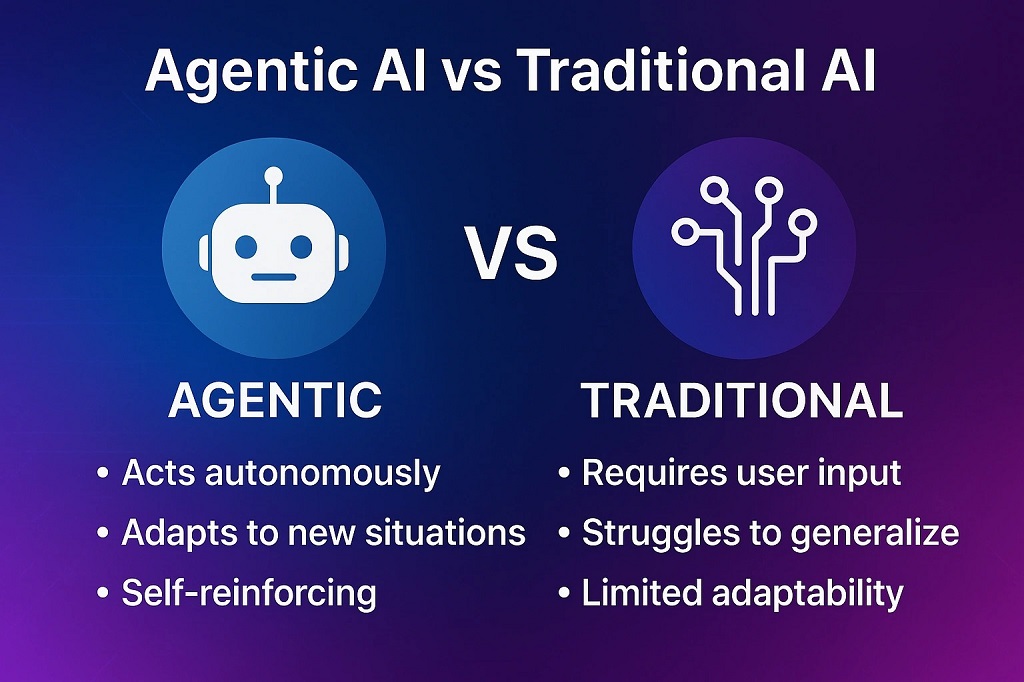What are the core components of an agentic system?
- Reasoning engine — planning and decision logic (LLMs + symbolic logic or planners).
- Memory system — short and long-term memory via vector stores, databases, or knowledge graphs.
- Tool integration — APIs, browser automation, shells, cloud services, sensors.
- Execution controller — orchestrates actions, enforces timeouts, and applies safety constraints.
- Feedback loop — observes outcomes, scores results, and adapts future behavior.
Why do programming languages matter when building agentic AI?
The programming language you pick affects developer productivity, runtime performance, safety guarantees, and how well your agent integrates with other systems. Agentic systems require concurrency, robust I/O, access to ML toolkits, and safe execution sandboxes. A language that excels at these dimensions will reduce bugs, improve performance, and make safety controls easier to enforce.
Which practical concerns should influence the language choice?
- Performance & concurrency: Can the language efficiently manage many parallel tasks and event loops?
- Tooling & libraries: Are there LLM clients, memory stores, and agent frameworks available?
- Safety & sandboxing: Does the language make it easier to isolate untrusted code and enforce permission boundaries?
- Interoperability: How easily can the language call APIs, automate browsers, or run system commands?
- Deployment: Are builds portable, and is the runtime suitable for cloud or edge?
Which programming languages are most commonly used for agentic AI?
Several languages are popular for different parts of an agentic stack. Below is a concise comparison of strengths, weaknesses, and typical use cases.
| Language | Strengths | Weaknesses | Typical Use Cases |
|---|---|---|---|
| Python | Rich ML ecosystem, agent frameworks (LangChain, Autogen), rapid prototyping | Slower runtime, concurrency limitations without careful design | Prototyping agents, research, LLM orchestration |
| JavaScript / TypeScript | Web-native, browser automation, great for UI + agents | Weaker numerical libraries, occasional performance limits | Web agents, browser automation, frontend assistants |
| Rust | Memory safety, high performance, good for sandboxing | Steeper learning curve, smaller ML ecosystem | Security-critical agents, production sandboxes |
| Go (Golang) | Excellent concurrency, small static binaries, easy deployment | Fewer native ML libraries | High-throughput orchestration, scalable agent services |
| Julia | Fast numerical computing, parallelism for simulations | Smaller ecosystem for LLMs and agent frameworks | Scientific agents, simulation-based planning |
| Domain-Specific Languages (DSLs) | Concise syntax for planning, safer by design | Niche adoption, may require new tooling | Enterprise orchestrations, regulated environments |
What language features should developers prioritize for agentic AI?
When evaluating a language or platform for agentic projects, target these capabilities first.
1. Concurrency and asynchronous execution
Agent loops (plan → act → observe → reflect) often run concurrently, call external APIs, and wait on I/O. Languages with mature async models (async/await in Python/JS, goroutines in Go, async in Rust) make implementing these loops cleaner and more reliable.
2. Strong LLM and tooling integration
Look for existing model clients, prompt templating, streaming support, function-calling, and retry logic. Python currently leads, but JS/TS and growing Rust/Go ecosystems are closing the gap.
3. Memory and knowledge-store support
Agents need vector stores, caching layers, and connections to knowledge graphs. Native drivers or well-supported SDKs reduce friction when building retrieval-augmented workflows.
4. Sandboxing and permission controls
Safety requires the ability to restrict file access, network calls, and external tool usage. Languages that facilitate fine-grained sandboxing (or that easily integrate with container/VM isolation) improve safety posture.
5. Observability and debugging
Because agents act autonomously, logging, tracing, replayability of decision traces, and tooling for inspecting agent state are essential for safe and debuggable systems.
Which language should I choose depending on my project goals?
Your project constraints determine the best choice:
- Rapid prototyping & research: Python (fast iteration, best libraries).
- Web/UI agents: JavaScript/TypeScript (native browser access, UI integration).
- Performance & safety: Rust (safe sandboxes, speed).
- Cloud scale & concurrency: Go (goroutines and easy deployment).
- Simulations & numerical agents: Julia (high-performance computing).
- Regulated/enterprise workflows: DSLs or strongly typed languages for predictable behavior.
What are common pitfalls when building agentic systems and how can they be avoided?
Agentic systems amplify both power and risk. Watch for these common pitfalls:
- Over-automation: Agents performing irreversible actions without human checks. Mitigation: staged approvals and human-in-the-loop gates.
- Weak safety constraints: Agents accessing sensitive resources. Mitigation: enforce permission scopes, use least privilege.
- Poor observability: Hard-to-debug failures. Mitigation: structured decision logs and replay capability.
- Vendor lock-in: Tying core logic to proprietary APIs. Mitigation: abstract model and tool interfaces.
- Mixing too many frameworks: Increased complexity. Mitigation: choose a small, well-understood stack.
What future trends should developers watch in agentic AI programming?
Several trends will shape the next few years:
- Agent-native DSLs that express plans and safety rules more directly.
- Agents writing and maintaining code — self-updating, self-debugging components under human supervision.
- Tighter safety sandboxes embedded into runtimes and languages.
- First-class LLM tooling across languages, reducing the current Python/JS divide.
Related Topics:
How should I start building my first agentic project?
Follow a practical, safety-first approach:
- Prototype in Python to prove workflows quickly using LangChain or a similar framework.
- Isolate risky actions behind human approvals or a sandboxed microservice.
- Implement observability (structured logs, decision traces, replay data).
- Iterate on safety rules (rate limits, permission scopes, action whitelists).
- Evaluate production needs — if you need scale or safety guarantees, consider porting performance-critical parts to Rust or Go.
Related Topics: AI Generated Disney Movies To Watch Now
What are the most frequently asked questions developers have about agentic AI programming?
1. Which programming language is “best” for agentic AI?
There is no single “best” language. fast prototyping and the broadest library support, Python is the default. web integration use JavaScript/TypeScript. production systems that need strict safety and high performance, Rust or Go are strong candidates.
2. Do I need special frameworks to build agents?
No — you can build agents from first principles — but frameworks like LangChain, Autogen, and LlamaIndex drastically reduce boilerplate, provide tested integrations, and include many safety and memory features out of the box.
3. How important is sandboxing and permissions?
Very important. Agents operate autonomously: restricting file/network access, enforcing timeouts, and using least-privilege credentials are foundational safety practices.
4. Can agents be made explainable and auditable?
Yes. Make decision traces, prompts, tool calls, and outcome evaluations part of your observability pipeline. These artifacts enable audits, debugging, and compliance reviews.
5. Will agents replace developers?
Not in the near term. Agents can automate repetitive tasks and assist with development, but human oversight, design, safety judgment, and system-level thinking remain essential.
Begin with well-maintained agent frameworks and official SDKs for your target models. Build a small, safe prototype, instrument it heavily, and iterate. If you’d like, I can generate starter templates in Python, TypeScript, Rust, or Go tailored to your use case (research agent, web automation, or production orchestrator).

